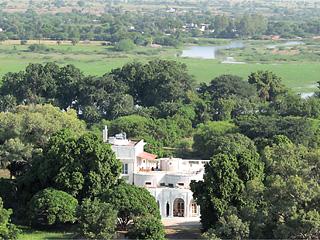
bhilwara TourismThe main task of building bhilwara is British. They developed it as the chief commercial mart of Central India. And if Tod is to be believed, the present town was absolutely non-existent when they took upon themselves the task of building a bazaar with the required infrastructure that would support it. Both foreign and local merchants were encouraged to settle here, shops and houses were given out at moderate rates and fairs were hosted almost every week in which goods from distant lands were piled up in the streets. The entire project was taken up with utmost seriousness by the British who not only exempted bhilwara from taxation for a full year but also posted guards to ensure a sense of security among the inhabitants. A kind of democratic set up was allowed for bhilwara to stimulate growth.  But if not, then it’s only about 400 years old. And this is according to authentic records. 16th century Rajasthan belonged to the Rajputs. For most of the time these men were building grand forts and fighting amongst themselves or with others for Honour, and at times, for territory. So in keeping with the trend, the Ranas of Mewar (Udaipur), too, were always fighting, especially the Mughals. bhilwara had nothing to do in this power struggle, except for the fact that it lay on the Mewar-Delhi route. On the occasion of every invasion and Mewar’s resistance to it, the villages and towns here would be plundered. As a result the plains of bhilwara lay periodically deserted.
But good times were ahead; the 17th and 18th centuries were more or less peaceful. A treaty had been signed between Mewar’s Amar Singh and Delhi’s Jahangir in 1615. But Amar Singh was so upset with himself for having shaken hands with the Mughals that he gave up his title in favour of his son Maharana Karan Singh.
But if not, then it’s only about 400 years old. And this is according to authentic records. 16th century Rajasthan belonged to the Rajputs. For most of the time these men were building grand forts and fighting amongst themselves or with others for Honour, and at times, for territory. So in keeping with the trend, the Ranas of Mewar (Udaipur), too, were always fighting, especially the Mughals. bhilwara had nothing to do in this power struggle, except for the fact that it lay on the Mewar-Delhi route. On the occasion of every invasion and Mewar’s resistance to it, the villages and towns here would be plundered. As a result the plains of bhilwara lay periodically deserted.
But good times were ahead; the 17th and 18th centuries were more or less peaceful. A treaty had been signed between Mewar’s Amar Singh and Delhi’s Jahangir in 1615. But Amar Singh was so upset with himself for having shaken hands with the Mughals that he gave up his title in favour of his son Maharana Karan Singh.
|

